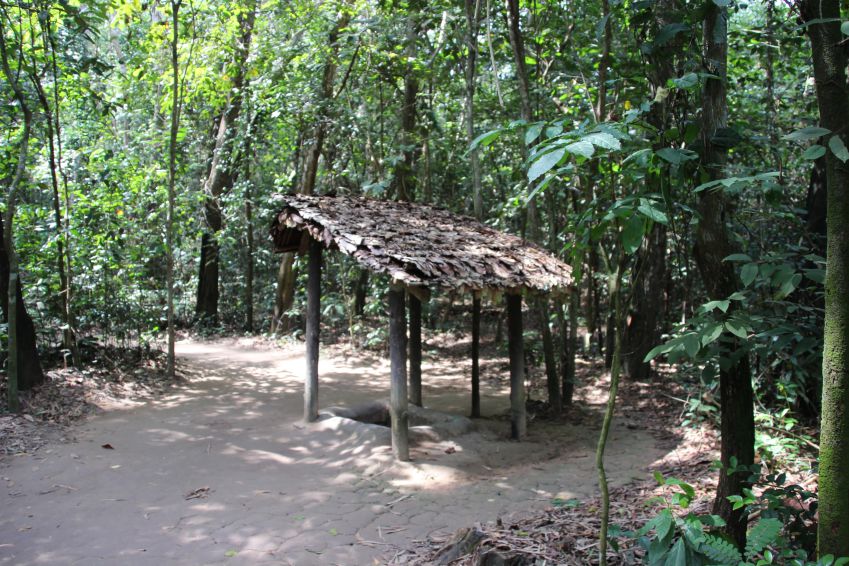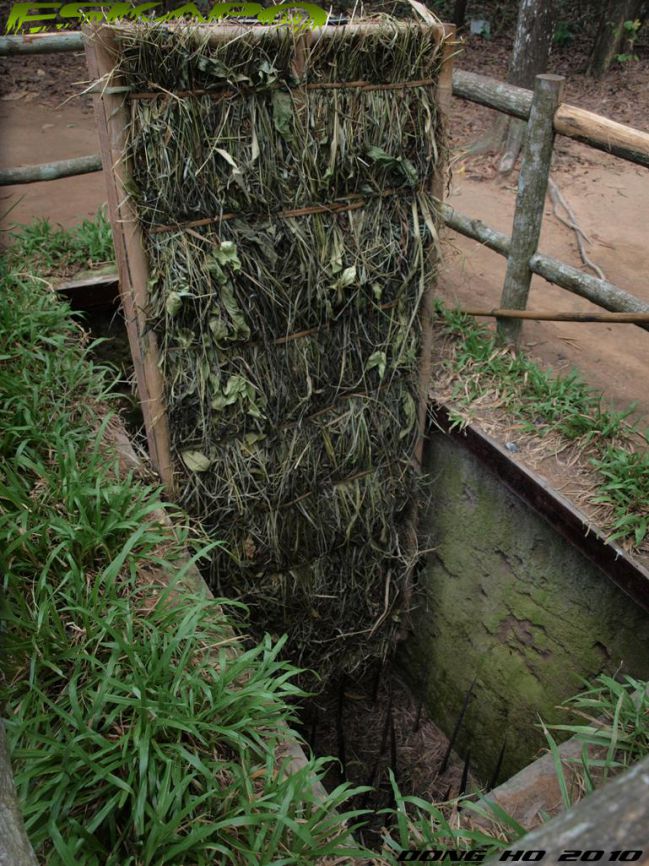Located about 70km northwest of Ho Chi Minh City, Cu Chi Tunnel is a miniature place for the transformation of the Vietnamese army and people during the 30 years of the resistance war. With a total length of more than 250km and a different 3 -storey structure, the tunnel is not only a shelter but also a solid fortress, where the miraculous feats in the history of struggle for independence and freedom of the nation.
The origin and meaning of the geographical term Cu Chi
Cu Chi Tunnels were born in the context of the resistance against the French colonialists (1945 - 1954), when revolutionary soldiers need a safe shelter to avoid the enemy's harsh pursuit. Initially, the secret basement was built in the ground with a simple design, only a small tunnel had just enough for a person to pass through and a vapor hole to breathe. However, the disadvantage of these basements is that they are easily detected and destroyed if the enemy finds out. From that fact, the people of Cu Chi have created the tunnels connected to each other, there are many secret doors to both hide and fight the enemy and easily escape when needed.
The first sections of tunnels appeared in 1948 in Tan Phu Trung and Phuoc Vinh An communes. Initially, they were only short sections used to hide documents, weapons and shelter. But over time, the tunnel system is increasingly expanded and completed, becoming a continuous network connecting communes and hamlets in the region. In particular, from 1961 to 1965, when the guerrilla war in Cu Chi thrives, the tunnel has become an important part of the resistance strategy, contributing to defeating the US "special war" strategy.
During the anti -American resistance war, Cu Chi Tunnels continued to prove their strategic role. Facing the fierce attack of the US military with major operations such as Crimp (1966) or Cedar Falls (1967), the people of Cu Chi still resiliently clinging to, digging more tunnels, building fortunes and turning this place into a famous "American Kill belt". With the slogan "One inch did not go, a glass of not leaving," the army and the people of Cu Chi created an inviolable fortress, causing the enemy to be terrified.
Cu Chi Tunnels are not only a unique military project but also a symbol of patriotism and indomitable spirit of the Vietnamese nation. In the ground of Cu Chi, thousands of soldiers and people lived, fought and sacrificed to write heroic history pages. Cu Chi Tunnels are forever the pride of Vietnam, a legend that lives forever in the hearts of every Vietnamese land.
Underground military exploits
Cu Chi Tunnels Historical Site consists of two main areas: Ben Duoc Tunnels (Saigon - Gia Dinh Military Region Base) and Ben Dinh Tunnels (Cu Chi District Party Committee). This is a network of interlaced tunnels, running in the ground, from the "backbone" that emits countless different short and short branches, connected or independent depending on the terrain. Some branches also bloomed into the Saigon River, creating conditions for the resistance forces to cross the river to Ben Cat base (Binh Duong) in endangered situations.
The tunnel system is divided into three floors with different depth and function. The first floor is located at a depth of about 3m, capable of withstand the weight of tanks, armored vehicles and artillery shells. This is the place to arrange ventilation pipes, kitchen and traps to prevent enemies. The second floor, about 5m deep, can fight small bombs. This is a shelter, ambush and there are paths with a series of traps. The third floor, from 8 to 12m deep, is the safest layer, capable of resisting most bombs. This floor is used to place military stations, arsenal, resting places and activities of officials, as well as organizing strategic meetings.

The tunnel and vents are carefully disguised and difficult to detect. Around the tunnel door are tunnels, pits, left mines (called death), in order to destroy and prevent enemies from approaching. In addition, in the tunnel, there are works for combat and activities such as Hoang Cam Kitchen (hidden smoke kitchen), A -shaped cellar for women and children hiding, large tunnels to rest after fighting, weapons reserves, food, food and drinking water.
However, life in the tunnel is extremely arduous. The underground air is often wet, stifling, lacking in light and oxygen. People and soldiers must go crouching or crawling in narrow tunnels. In the rainy season, the ground generates many toxic insects, even snakes. But overcoming all difficulties, the army and people of Cu Chi are still resiliently clinging to, turning the tunnel into a solid fortress, a place to preserve forces and organize effective counter -attacks.
Right from the early days when the US troops landed in Cu Chi, they met the fierce resistance of the army and people here. The enemy quickly realized that all battle activities came from the tunnel system, so they were determined to destroy this beneficial work at all costs. However, the enemy's tricks were in turn failed to create the creativity and the resilient will of our army and people.
Historical heritage and attractive tourist destinations
Cu Chi was awarded the noble title "Cu Chi steel into Dong" by the National Liberation Front of South Vietnam. The Government has also praised the title of Hero of the People's Armed Forces twice for the district. Up to now, the whole district has been honored with 19 heroic communes, 39 heroes of the People's Armed Forces, 1,277 Vietnamese Heroic Mothers and 1,800 people were awarded the title of Dung Si. The district was also awarded two medals into the Fatherland and more than 500 military medals, victories for excellent collectives and individuals.


Today, Cu Chi Tunnels have become a special national historical monument, attracting millions of domestic and foreign tourists every year. This is not only a place to commemorate the merits of martyrs but also a symbol of patriotism and creativity of the Vietnamese people.
Visitors to Cu Chi Tunnels can directly experience the feeling of crawling in narrow tunnels, admire the traps, tunnels and learn about the arduous but resilient life of the army and the people of Cu Chi in wartime. More than a historical monument, Cu Chi Tunnels are a valuable lesson of solidarity, patriotism and the will to overcome all difficulties.
These features and historical values were confirmed when the Ben Duoc Tunnels (Phu Hiep Hamlet, Phu My Hung Commune, Cu Chi District) were ranked by the Ministry of Culture and Tourism of the National Historical Site in 1979. Ben Dinh Tunnels (Nhuan Duc Commune, the base of Cu Chi District Party Committee in the resistance war) was also recognized as a national historical monument in 2004. Covernment recognizes as a special national monument, affirming the stature and longevity of an indomitable symbol in national history.











